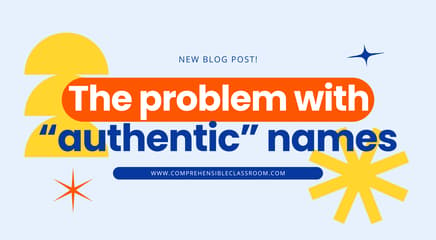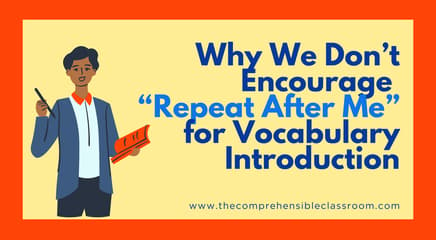While preparing for the Yup'ik Immersion training last week, I spent a lot of time scouring the internet for elementary TPRS resources and suggestions. Michel Baker's blog and Carol Gaab's article (linked in the YI post) were most helpful. According to their writing, one common obstacle for elementary TPRS teachers is managing student responses during discussion and storyaskin--everyone has an idea, and everyone wants their idea to be chosen. Among others (read this tutorial for more), they suggested that the teacher provide several choices and allow the students to vote. I tried this out while the Southwest Regional teachers were observing me last Friday, and I was so pleased at how well it worked in middle school.

Today, I began a new story with my Spanish A students, "El chico del apartamento 512". This is a unique story in that it parallels the song of the same title by Selena. In the song, Selena encounters three men with three different problems: smelly, old, and boring. In the past, I've always allowed my students to create their own problems for the characters in the story, but I realized today that it would greatly increase their comprehension of the song if they had already heard the terms for smelly, old, and boring. But how to choose the problems for the students and still make them feel like they are personalizing the story??
Vote!
I put up three labeled pictures on the board: one of a smelly guy that said "huele mal - smells bad", one of an old man that said "es viejo - is old", and one of a nerd that said "es aburrido - is boring". Then, whenever it came time for students to suggest problems that a man in the story had, I asked them to come up and vote by placing a sticky note on top of the problem that they thought that man should have. Once a problem won a vote, it became part of the story and was eliminated from future votes.
This worked SO well. The kids heard multiple repetitions of the three problems, even though they weren't target structures, it provided them with physical movement, and they were still excited when whatever they had voted for was chosen (feeling like they had helped in the story creation, as opposed to me just telling it to them). I DEFINITELY plan to use this strategy more in the future!



